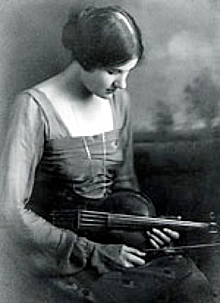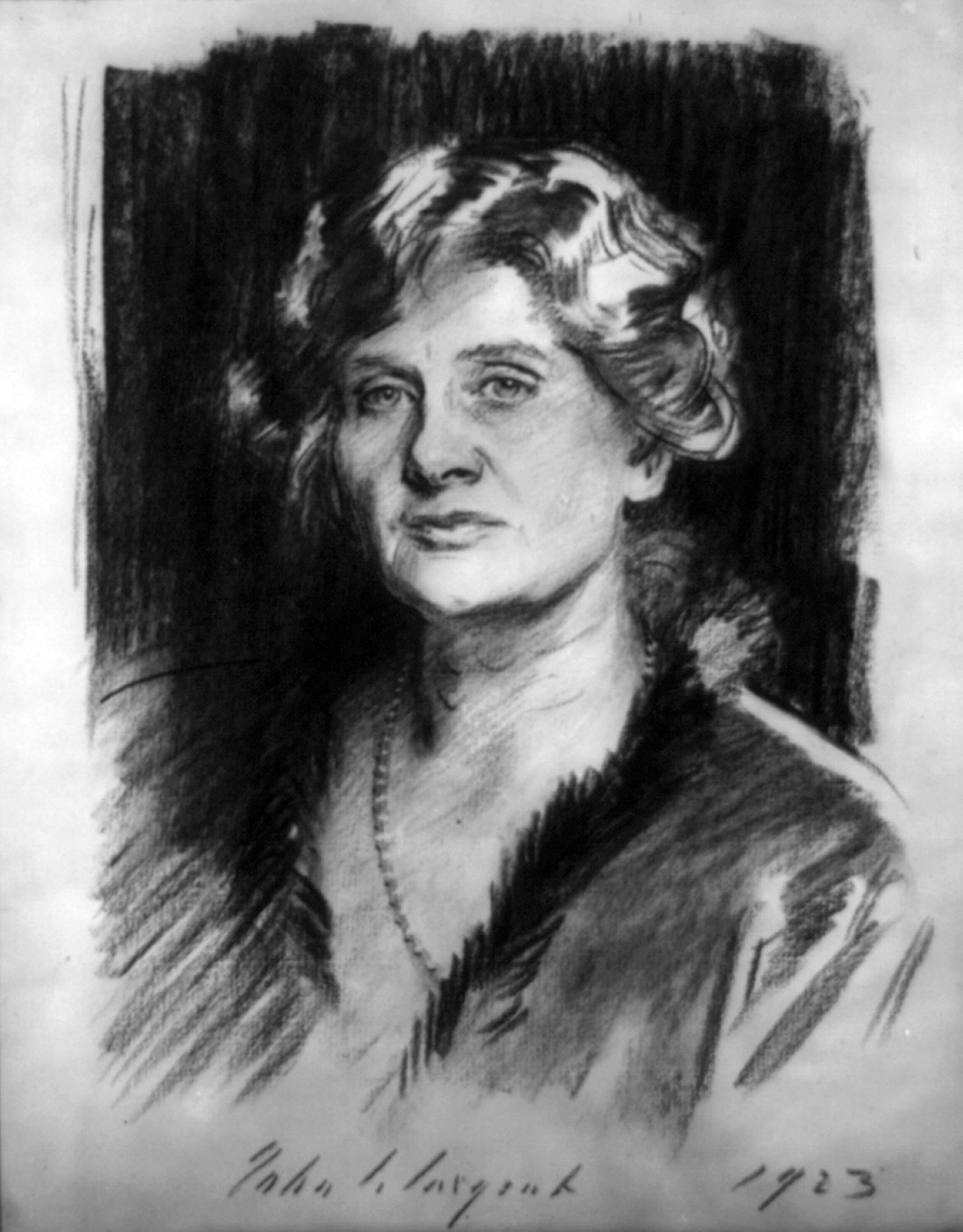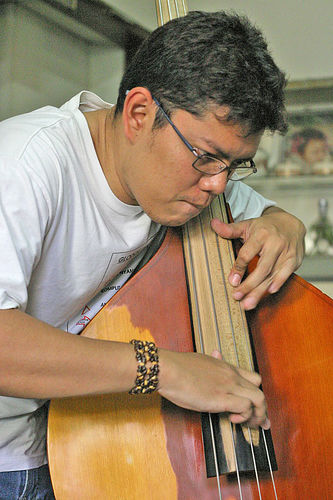|
Viola Sonata (Rebecca Clarke)
Rebecca Clarke composed the Sonata for Viola and Piano, attributed to the year 1919, when the composer was 33 years old. Clarke had moved to the United States in 1916, after being disowned by her father. She had been supporting herself with some success as a soloist. Career The first reference to the Viola Sonata was upon its submission to a composition competition sponsored by Clarke's neighbour, Elizabeth Sprague Coolidge. Out of 72 entries, Clarke's Sonata tied for first with a piece by the Swiss composer, Ernest Bloch. In the end Bloch was declared the winner, despite all the judges favouring Clarke—it was decided that declaring Clarke the winner would smack of favouritism on Coolidge's part. It was also suspected by some that the name "Rebecca Clarke" was a pen-name of a male composer, as few imagined the possibility of a competent woman writing such music. Premiere The piece had its première at the Berkshire Music Festival in 1919, and was well received. It, along with t ... [...More Info...] [...Related Items...] OR: [Wikipedia] [Google] [Baidu] |
Rebecca Clarke (composer)
Rebecca Helferich Clarke (27 August 1886 – 13 October 1979) was a British-American classical composer and violist. Internationally renowned as a viola virtuoso, she also became one of the first female professional orchestral players. Rebecca Clarke claimed both British and American nationalities and spent substantial periods of her life in the United States, where she permanently settled after World War II. She was born in Harrow and studied at the Royal Academy of Music and Royal College of Music in London. Stranded in the United States at the outbreak of World War II, she married composer and pianist James Friskin in 1944. Clarke died at her home in New York at the age of 93. Although Clarke's output was not large, her work was recognised for its compositional skill and artistic power. Some of her works have yet to be published (and many were only recently published); those that were published in her lifetime were largely forgotten after she stopped composing. Scholarship a ... [...More Info...] [...Related Items...] OR: [Wikipedia] [Google] [Baidu] |
Alfred De Musset
Alfred Louis Charles de Musset-Pathay (; 11 December 1810 – 2 May 1857) was a French dramatist, poet, and novelist.His names are often reversed "Louis Charles Alfred de Musset": see "(Louis Charles) Alfred de Musset" (bio), Biography.com, 2007, webpageBio9413"Chessville – Alfred de Musset: Romantic Player", Robert T. Tuohey, Chessville.com, 2006, webpage. Along with his poetry, he is known for writing the autobiographical novel ''La Confession d'un enfant du siècle'' (''The Confession of a Child of the Century''). Biography Musset was born in Paris. His family was upper-class but poor; his father worked in various key government positions, but never gave his son any money. Musset's mother came from similar circumstances, and her role as a society hostess – for example her drawing-room parties, luncheons and dinners held in the Musset residence – left a lasting impression on young Alfred. An early indication of his boyhood talents was his fondness for acting impromptu m ... [...More Info...] [...Related Items...] OR: [Wikipedia] [Google] [Baidu] |
Elizabeth Sprague Coolidge
Elizabeth Sprague Coolidge aka Liz Coolidge (30 October 1864 – 4 November 1953), born Elizabeth Penn Sprague, was an American pianist and patron of music, especially of chamber music. Biography Elizabeth Sprague Coolidge's father was a wealthy wholesale dealer in Chicago. She was musically talented and studied piano with Regina Watson, as well as composition with other teachers. She married the physician Frederic Shurtleff Coolidge who died from syphilis contracted from a patient during surgery, leaving her with their only child Albert. Soon after, her parents died as well. Coolidge's cousin was Lucy Sprague Mitchell, the founder of Bank Street College of Education. Coolidge provided Mitchell with funds for the founding of the school in 1916. She inherited a considerable amount of money from her parents and decided to spend it on promotion of chamber music, a mission she continued to carry out until her death at the age of 89 in Cambridge, Massachusetts. Due to her husb ... [...More Info...] [...Related Items...] OR: [Wikipedia] [Google] [Baidu] |
Ernest Bloch
Ernest Bloch (July 24, 1880 – July 15, 1959) was a Swiss-born American composer. Bloch was a preeminent artist in his day, and left a lasting legacy. He is recognized as one of the greatest Swiss composers in history. As well as producing musical scores, Bloch had an academic career that culminated in his recognition as Professor Emeritus at the University of California, Berkeley in 1952. Biography Bloch was born in Geneva on July 24, 1880 to Jewish parents. He began playing the violin at age 9, and began composing soon after. He studied music at the conservatory in Brussels, where his teachers included the celebrated Belgian violinist Eugène Ysaÿe. He then traveled around Europe, moving to Germany (where he studied composition from 1900–1901 with Iwan Knorr at the Hoch Conservatory in Frankfurt), on to Paris in 1903 and back to Geneva before settling in the United States in 1916, taking US citizenship in 1924. He held several teaching appointments in the US, where his pupil ... [...More Info...] [...Related Items...] OR: [Wikipedia] [Google] [Baidu] |
Claude Debussy
(Achille) Claude Debussy (; 22 August 1862 – 25 March 1918) was a French composer. He is sometimes seen as the first Impressionist composer, although he vigorously rejected the term. He was among the most influential composers of the late 19th and early 20th centuries. Born to a family of modest means and little cultural involvement, Debussy showed enough musical talent to be admitted at the age of ten to France's leading music college, the Conservatoire de Paris. He originally studied the piano, but found his vocation in innovative composition, despite the disapproval of the Conservatoire's conservative professors. He took many years to develop his mature style, and was nearly 40 when he achieved international fame in 1902 with the only opera he completed, '' Pelléas et Mélisande''. Debussy's orchestral works include ''Prélude à l'après-midi d'un faune'' (1894), ''Nocturnes'' (1897–1899) and ''Images'' (1905–1912). His music was to a considerable extent a r ... [...More Info...] [...Related Items...] OR: [Wikipedia] [Google] [Baidu] |
Ralph Vaughan Williams
Ralph Vaughan Williams, (; 12 October 1872– 26 August 1958) was an English composer. His works include operas, ballets, chamber music, secular and religious vocal pieces and orchestral compositions including nine symphonies, written over sixty years. Strongly influenced by Tudor music and English folk-song, his output marked a decisive break in British music from its German-dominated style of the 19th century. Vaughan Williams was born to a well-to-do family with strong moral views and a progressive social life. Throughout his life he sought to be of service to his fellow citizens, and believed in making music as available as possible to everybody. He wrote many works for amateur and student performance. He was musically a late developer, not finding his true voice until his late thirties; his studies in 1907–1908 with the French composer Maurice Ravel helped him clarify the textures of his music and free it from Music of Germany, Teutonic influences. Vaughan Williams i ... [...More Info...] [...Related Items...] OR: [Wikipedia] [Google] [Baidu] |
Musical Mode
In music theory, the term mode or ''modus'' is used in a number of distinct senses, depending on context. Its most common use may be described as a type of musical scale coupled with a set of characteristic melodic and harmonic behaviors. It is applied to major and minor keys as well as the seven diatonic modes (including the former as Ionian and Aeolian) which are defined by their starting note or tonic. (Olivier Messiaen's modes of limited transposition are strictly a scale type.) Related to the diatonic modes are the eight church modes or Gregorian modes, in which authentic and plagal forms of scales are distinguished by ambitus and tenor or reciting tone. Although both diatonic and gregorian modes borrow terminology from ancient Greece, the Greek ''tonoi'' do not otherwise resemble their mediaeval/modern counterparts. In the Middle Ages the term modus was used to describe both intervals and rhythm. Modal rhythm was an essential feature of the modal notation system o ... [...More Info...] [...Related Items...] OR: [Wikipedia] [Google] [Baidu] |
Whole-tone
In Western music theory, a major second (sometimes also called whole tone or a whole step) is a second spanning two semitones (). A second is a musical interval encompassing two adjacent staff positions (see Interval number for more details). For example, the interval from C to D is a major second, as the note D lies two semitones above C, and the two notes are notated on adjacent staff positions. Diminished, minor and augmented seconds are notated on adjacent staff positions as well, but consist of a different number of semitones (zero, one, and three). The major second is the interval that occurs between the first and second degrees of a major scale, the tonic and the supertonic. On a musical keyboard, a major second is the interval between two keys separated by one key, counting white and black keys alike. On a guitar string, it is the interval separated by two frets. In moveable-do solfège, it is the interval between ''do'' and ''re''. It is considered a mel ... [...More Info...] [...Related Items...] OR: [Wikipedia] [Google] [Baidu] |
Harmonics
A harmonic is a wave with a frequency that is a positive integer multiple of the ''fundamental frequency'', the frequency of the original periodic signal, such as a sinusoidal wave. The original signal is also called the ''1st harmonic'', the other harmonics are known as ''higher harmonics''. As all harmonics are periodic at the fundamental frequency, the sum of harmonics is also periodic at that frequency. The set of harmonics forms a '' harmonic series''. The term is employed in various disciplines, including music, physics, acoustics, electronic power transmission, radio technology, and other fields. For example, if the fundamental frequency is 50 Hz, a common AC power supply frequency, the frequencies of the first three higher harmonics are 100 Hz (2nd harmonic), 150 Hz (3rd harmonic), 200 Hz (4th harmonic) and any addition of waves with these frequencies is periodic at 50 Hz. In music, harmonics are used on string instruments and wind instrum ... [...More Info...] [...Related Items...] OR: [Wikipedia] [Google] [Baidu] |
Pizzicato
Pizzicato (, ; translated as "pinched", and sometimes roughly as "plucked") is a playing technique that involves plucking the strings of a string instrument. The exact technique varies somewhat depending on the type of instrument : * On bowed string instruments it is a method of playing by plucking the strings with the fingers, rather than using the bow. This produces a very different sound from bowing, short and percussive rather than sustained. * On keyboard string instruments, such as the piano, pizzicato may be employed (although rarely seen in traditional repertoire, this technique has been normalized in contemporary music, with ample examples by George Crumb, Toru Takemitsu, Helmut Lachenmann, and others) as one of the variety of techniques involving direct manipulation of the strings known collectively as "string piano". * On the guitar, it is a muted form of plucking, which bears an audible resemblance to pizzicato on a bowed string instrument with its relatively short ... [...More Info...] [...Related Items...] OR: [Wikipedia] [Google] [Baidu] |
Ruth Lomon
Ruth Lomon (7 November 1930 – 26 September 2017) was a Canadian classical composer. A native of Montreal, Canada, she was born in Montreal and died in Cambridge, Massachusetts. She attended le Conservatoire de Quebec and McGill University. She continued her studies with Francis Judd Cooke at the New England Conservatory of Music and later with Witold Lutosławski at Dartington College in England. In 1998, Lomon became Composer/Resident Scholar at the Women's Studies Research Center, Brandeis University. She composed an oratorio, ''Testimony of Witnesses'', for vocal soloists, chorus and orchestra. She was the recipient of a grant from the Hadassah International Research Center (now the Hadassah-Brandeis Institute) for this work. She was commissioned by the Pro Arte Chamber Orchestra, Boston to compose a trumpet concerto, ''Odyssey'', for Charles Schlueter, principal trumpet of the Boston Symphony Orchestra. During 1995-96, Lomon was a fellow of the Bunting Institute, Radcl ... [...More Info...] [...Related Items...] OR: [Wikipedia] [Google] [Baidu] |
Footnotes
A note is a string of text placed at the bottom of a page in a book or document or at the end of a chapter, volume, or the whole text. The note can provide an author's comments on the main text or citations of a reference work in support of the text. Footnotes are notes at the foot of the page while endnotes are collected under a separate heading at the end of a chapter, volume, or entire work. Unlike footnotes, endnotes have the advantage of not affecting the layout of the main text, but may cause inconvenience to readers who have to move back and forth between the main text and the endnotes. In some editions of the Bible, notes are placed in a narrow column in the middle of each page between two columns of biblical text. Numbering and symbols In English, a footnote or endnote is normally flagged by a superscripted number immediately following that portion of the text the note references, each such footnote being numbered sequentially. Occasionally, a number between brack ... [...More Info...] [...Related Items...] OR: [Wikipedia] [Google] [Baidu] |



.jpg)





